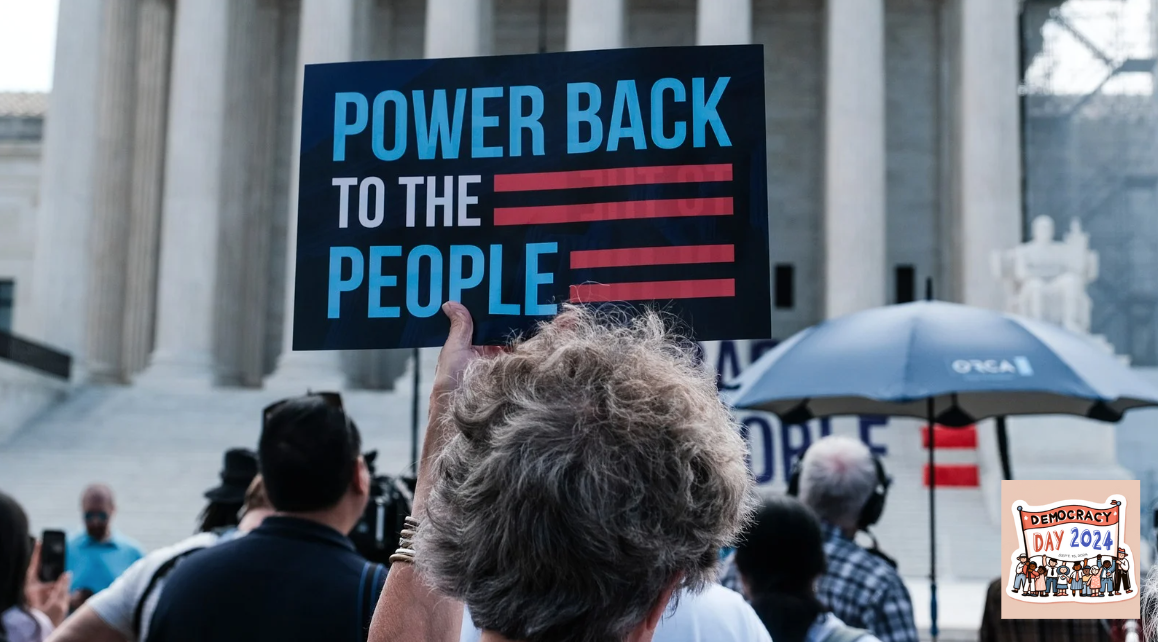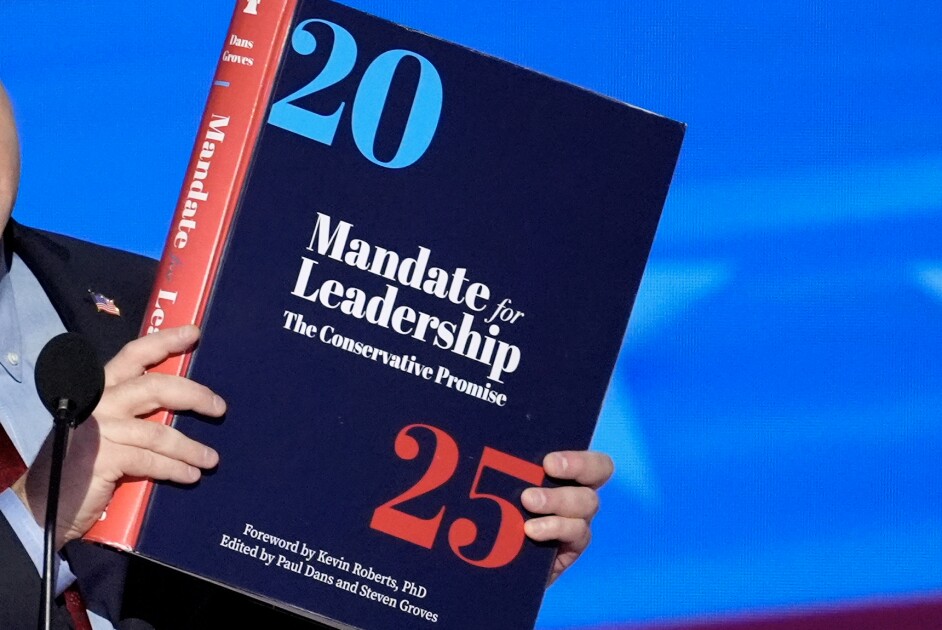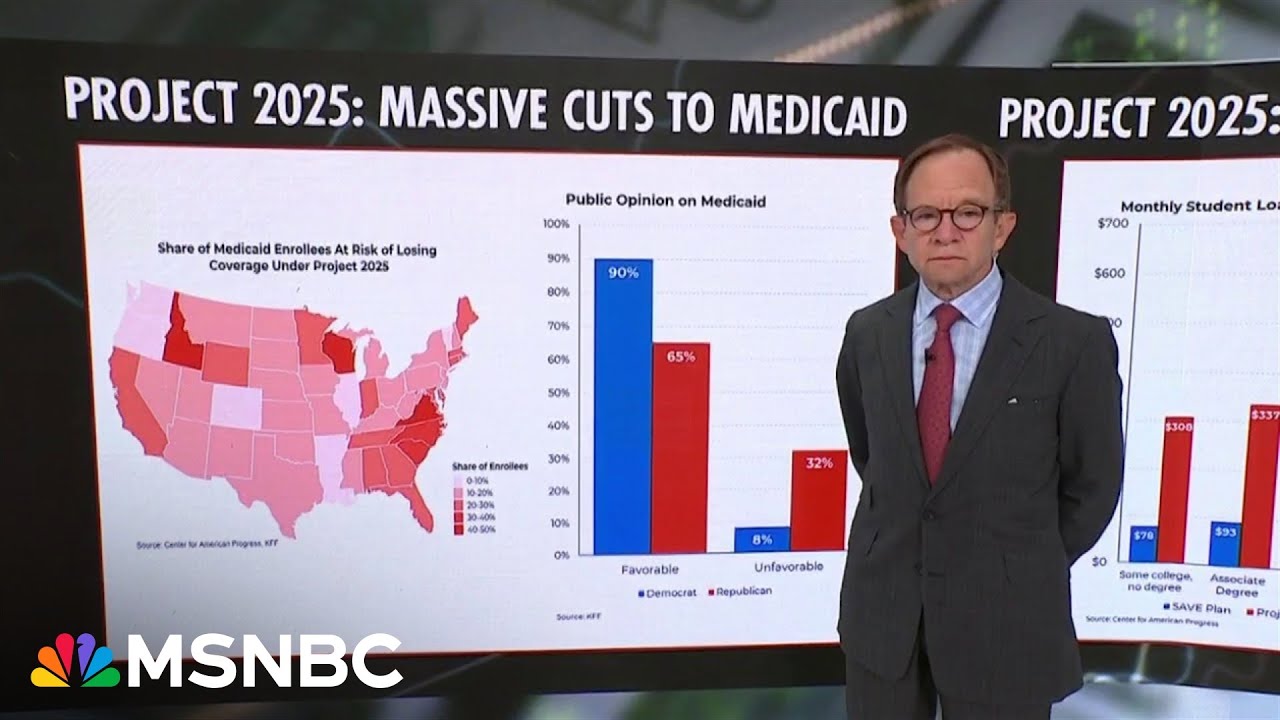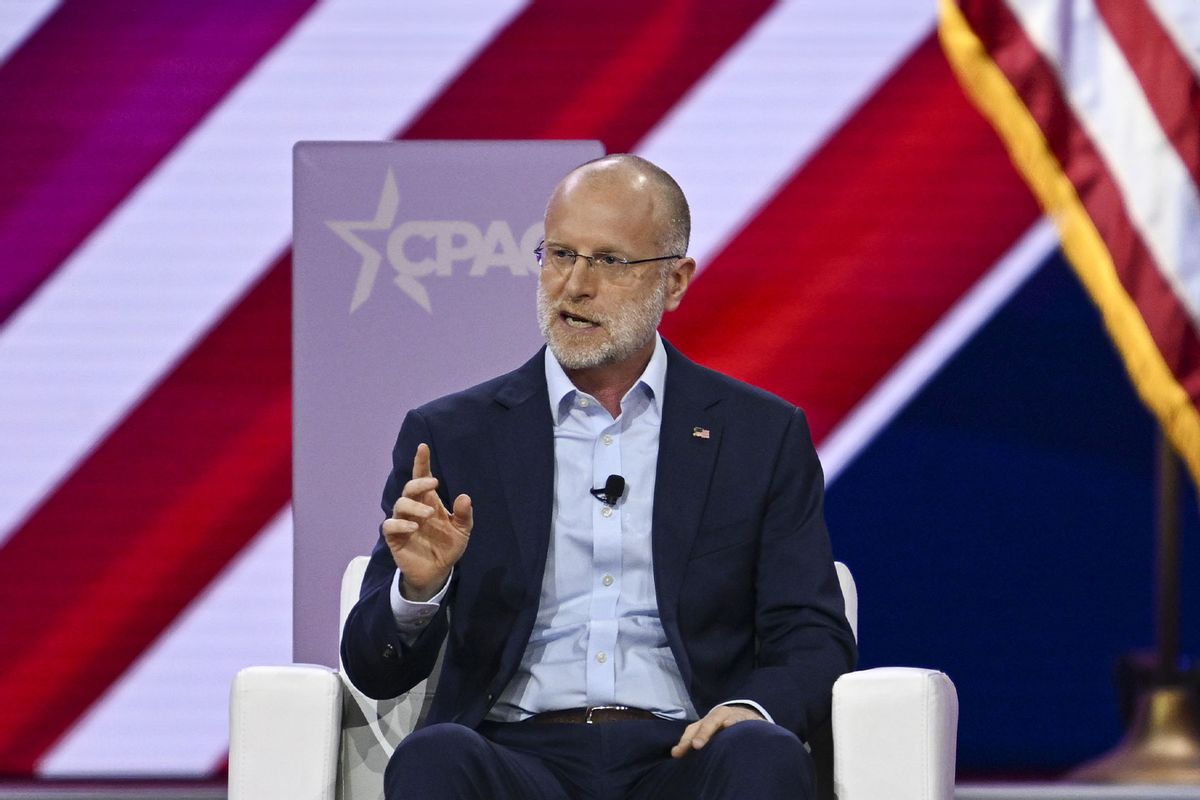by Kieryn Darkwater
I was on a train to New York City when the Supreme Court overturned 40 years of legal precedent that was the backbone of our civil infrastructure, advancing a lot of Project 2025’s anti-democratic plans to eliminate the “deep state” and control the personal lives of the American people.
With the Loper Bright Enterprises v. Raimondo ruling that shifted authority from federal agencies back to the courts, it doesn’t matter if former President Donald Trump is reelected. As long as the courts are stacked with partisan judges—allowing organizations like Alliance Defending Freedom and America First Legal to continue bringing bogus cases to the Supreme Court—Project 2025’s agenda can be implemented well outside of the democratic process.
But how did we get here? In 1984, the Supreme Court issued its ruling in Chevron v. Natural Resources Defense Council. The case was brought to the court because the Clean Air Act of 1963 didn’t explicitly define what a “stationary source” of pollution was. The Environmental Protection Agency (EPA) changed the definition of “stationary source” in 1981, leading the Natural Resources Defense Council to sue the EPA. This led to the Supreme Court’s creation of what became known as the “Chevron deference.” This rubric meant that courts were supposed to defer to the expertise of the agencies interpreting and enforcing the mandates Congress delegated to them.
Professional experts have handled the details of defining and implementing programs and policies for 40 years. When companies and organizations tried to challenge policies, the buck usually stopped with the agency. For example, the public health mandates at the height of the pandemic were built on the Chevron deference. Because of the Supreme Court’s ruling in Loper Bright, companies and organizations can challenge agency statutes they dislike and bring them to the Supreme Court to rule on. In effect, to quote Justice Elena Kagan’s dissent, the Supreme Court is now the nation’s “administrative czar.”
In 1984, the Chevron decision was considered a boon by Reagan supporters, who saw the rubric as benefiting companies and promoting deregulation. Over time, many of those same people—people who went on to collaborate with the organizations behind Project 2025—grew to hate the ruling because it ultimately became a tool to empower federal regulations. Right-wing legal organizations like America First Legal, Competitive Enterprise Institute, the American Center for Law and Justice, and many others filed amicus briefs on behalf of Loper Bright Enterprises to persuade the court to overturn the Chevron decision. As of September 2024, these same groups were included in Project 2025’s list of advisors.
There is more to the Loper Bright case than meets the eye. The company is framing its suit as a small family business burdened by paying government monitors to prevent overfishing. But the case is actually part of a series of lawsuits backed by the ultra-conservative billionaire Koch brothers, with the goal of rewriting the way the administration of the federal government works—more directly aligning the government with the authoritarian, anti-accountability agenda of the GOP.
It’s crucial to remember that while the Trump campaign has spent weeks trying to publicly distance itself from Project 2025, the Trump campaign’s “Agenda 47” platform is identical. Like Project 2025, Trump and his running mate Ohio Senator J.D. Vance plan to send issues like abortion, education, and public health and safety to the states.
Every agency in Project 2025’s plan—and Trump’s Agenda 47—is impacted by the combined decisions of Loper Bright and Corner Post v. Board of Governors of the Federal Reserve System, a ruling delivered July 1 that extended the deadline to appeal a regulatory statute from six years after its formation tosix years after a plaintiff is “injured” by the mandate. The Corner Post ruling means, for example, that right-wing groups now have more avenues to pursue after their last unsuccessful attack on the Food and Drug Administration’s (FDA) approval of the abortion medication mifepristone. These decisions make a significant portion of the Project 2025 playbook—and its overarching goal to dismantle the “deep state” by removing experts and installing political operatives—possible without a Trump presidential win.
By expanding the statute of limitations for policy appeals and declaring itself the authority of the executive branch, the Supreme Court has given organizations like Project 2025 and Alliance Defending Freedom an anti-democratic way to dictate policy.
When these power grabs don’t result in their favor, those on the right usually refer to it as “legislating from the bench,” claiming that judges act more like lawmakers than jurists. A good example of this is when Title IX expanded its decades-old protections to include trans people, conservative groups filed successions of lawsuits railing against “federal government overreach” that put the entire rule and host of protections on hold. This isn’t a new tactic. For decades, Republicans have successfully packed the courts while fearmongering about Democrats doing the same. The reason we’re seeing many harmful Supreme Court rulings, and the reason the district courts are sending bogus cases up to the Supreme level, is because Republicans have spent the last several decades perfecting their law school-to-policymaking pipeline for young conservatives.
It’s worth noting that the current Supreme Court bench is the culmination of decades of right-wing organizing, the results of which will linger for years. As Justice Neil Gorsuch referenced in the majority opinion of Loper Bright, the Supreme Court has actively inserted itself into the process of making statutory determinations since 2016 (well before Chevron). The administration of the U.S. government has historically been the responsibility of the president. After Loper Bright and Corner Post, when it comes to determining specific policy after a challenge, the authority is no longer within the executive branch. Now, it’s with the court.
My train to New York made it safely to the station because we have federal rail regulations and safety standards that Amtrak and freight trains must meet. The working conditions in the rail industry are already terrible. If profit-motivated companies get to sue the government to avoid consequences for negligence, if the Occupational Safety and Health Administration (OSHA), the Department of Transportation, or the EPA can’t enforce rail or workplace safety, we are all at risk. Last year, a Norfolk Southern train derailed and contaminated an entire town with toxic waste. Residents are still struggling to recover—and that’s with the assistance of the EPA and other state and federal agencies helping to mitigate the damage. Accidents like the East Palestine derailment can be avoided, but not if we lose the ability to enforce safety standards and hold companies accountable for their impacts.
It feels impossible to overstate the impact the Loper Bright and Corner Post rulings will have on every industry we’ve relied on to progress and function as a country for the last 40 years. From National Highway Traffic Safety Administration standards, the FDA, the Federal Emergency Management Agency (FEMA), OSHA, the EPA, to education, our personal safety, autonomy, and freedom of movement are all at risk.
We are already seeing the effects of these Supreme Court rulings.
Earlier this year, a school district in Southlake, Texas, was in negotiations with the Department of Education for violating the civil rights of students who faced racial and homophobic discrimination. On Aug. 5—a little more than a month after the Supreme Court overturned the Chevron deference—the school district’s lawyers sent a reply to the Department of Education, asserting that it has no legal ability to enforce its own rules and, therefore, the rules don’t apply and the case should be dismissed. Earlier in the summer, the Heritage Foundation made the same case in a Newsweek op-ed, arguing that the overturning of Chevron should lead to the elimination of the Department of Education.
When taken in the context of conservatives’ broader movement to destroy public education, it doesn’t feel like a coincidence that the civil rights of students are being directly attacked right before classes are scheduled to start and the new, more inclusive Title IX rules are supposed to take effect.
For decades, activists and organizations on the right have used a plethora of approaches to reach their goals: lawsuits, public advocacy, political lobbying, media messaging, becoming district or Supreme Court justices, and more. The secret to their success is multiple organizations working together or in tandem to reach their goals. With the recent Supreme Court decisions in play, it can feel like there’s nothing we can do—especially if we’re not in government or similar positions of power.
But we do have power, and we don’t have to work in isolation.
You don’t need to become a lawyer and make up lawsuits to write policy, but we can work together as activists, journalists, advocates, attorneys, policy wonks, and fellow concerned neighbors to tip the scales in ways that suit our interests and abilities. Because this is an election year, the first, bare minimum thing we can do is vote.
While many judges are appointed, state Supreme, appellate, and some other court justices are elected positions. For these positions, there generally isn’t a lot of campaigning, and voter information isn’t always accessible or easy to find. Ballotpedia can help with that.
Additionally, it never hurts to reach out to your elected officials. Massachusetts Sen. Elizabeth Warren introduced a bill in July that would restore the Chevron deference (among other consumer protections), while Washington Rep. Pramila Jayapal introduced a partner bill in the House in June. These bills have a better chance of passing if we all took a moment to call or email our Congress people in support of those bills, expanding the courts, and imposing term limits on justices while we’re at it. If finding and emailing your legislators seems like a daunting task, the folks at Democracy.io made it easy.
But voting and talking to people we already elected is a small step. A harder step is to choose a way to contribute and actually show up. The fight to protect democracy does not begin and end at the ballot box, it begins in our neighborhoods.
The people behind Project 2025 don’t seem to care that politicians like Trump and Vance are publicly distancing themselves; they’re banking on most Americans losing interest in their authoritarian plan after the polls close on November 5. If Vice President Kamala Harris wins her presidential bid, these far-right organizations still have powerful allies on court benches. If Trump wins, they win wholly.
Given the current climate and stakes, we can’t afford to simply stop at sending an email or making a phone call to members of Congress. All change starts locally, and consistently showing up to public meetings and speaking can make a difference.
Here are some other ways you can work with members of your community and local officials to codify the protections and policies Project 2025 seeks to eliminate:
- To protect marginalized students, pressure your state government to codify the expanded Title IX rules, join a children’s or students’ rights advocacy group, become a Court Appointed Special Advocate for children, or fight against book bans.
- To protect your local ecosystem, get involved with a native plant collective or conservation group, join a local environmental justice group, and advocate for your city or county to codify policies that protect the air, water, and land from pollution.
- To protect access to health care, volunteer with a local abortion fund, abortion support network, or your local community clinics, take emergency response training, or organize to enshrine health and reproductive care in your state’s Constitution.
- To protect access to shelter, find housing justice groups that are pushing local officials to build more housing, invest in permanent supportive housing and universal income programs, or volunteer at your local shelter or community center.
Those are just a few ideas to get started. Do some research, find an organization or collective in your community, and show up. If a need isn’t being met, grab a couple of friends or neighbors and start your own thing. Organizations on the far right have been doing this for decades, making incremental changes. Don’t get discouraged by roadblocks, and understand that your efforts likely won’t lead to immediate change. This country is ours, too, and it’s up to us to work hard to shape it in a way that benefits and respects us all. Every small step we take towards creating sustainable, long-term change for our community and country matters. The work of Project 2025 isn’t dependent on the outcome of this election, and our work shouldn’t either. Democracy is a practice, not a gift.
This article is part of U.S. Democracy Day, a nationwide collaborative on Sept. 15, the International Day of Democracy, in which news organizations cover how democracy works and the threats it faces. To learn more, visit usdemocracyday.org




